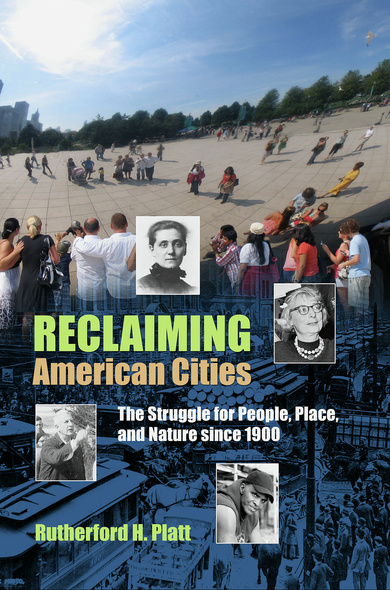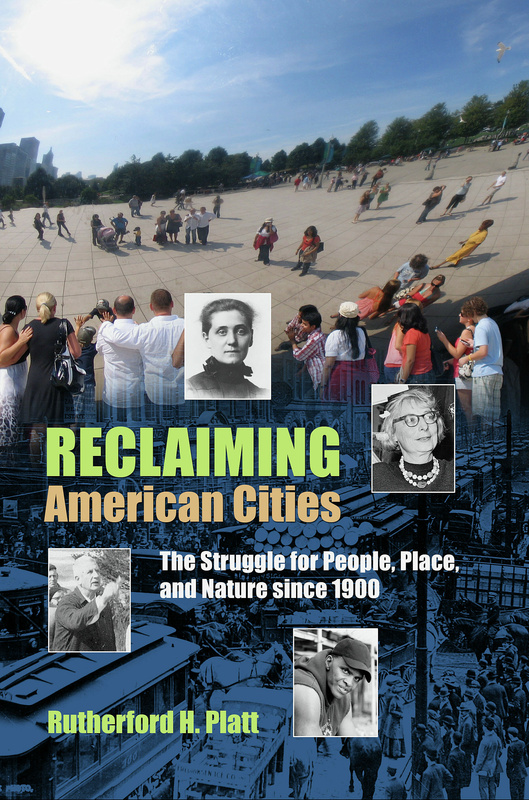
312 pages, 6 1/8 x 9 1/4
41 b&w illus.
Paperback
Release Date:23 Dec 2013
ISBN:9781625340504
Reclaiming American Cities
The Struggle for People, Place, and Nature since 1900
University of Massachusetts Press
For most of the past century, urban America was dominated by top-down policies serving the white business and cultural elite, the suburbs, and the automobile. At times these approaches were fiercely challenged by reformers such as Jane Addams and Jane Jacobs. Yet by the 1980s, mainstream policies had resulted in a nation of ravaged central cities, sprawling suburbs, social and economic polarization, and incalculable environmental damage.
In the 1990s, this entrenched model finally yielded to change as local citizens, neighborhood groups, and other stakeholders, empowered by a spate of new laws and policies, began asserting their own needs and priorities. Though hampered by fiscal crises and internal disagreements, these popular initiatives launched what the author terms a new era of "humane urbanism" marked by a determination to make cities and suburbs greener, healthier, safer, more equitable, more efficient, and generally more people-friendly. In the process, the mayors, architects, engineers, and bureaucrats who had previously dominated urban policy found themselves relegated to supporting roles.
As Rutherford H. Platt points out, humane urbanism can take many forms, from affordable housing and networks of bike paths to refurbished waterfronts and urban farms. Often spontaneous, low-tech, and self-sustaining programs, their shared goal is to connect people to one another and to bring nature back into the city. Reclaiming American Cities examines both sides of this historic transformation: the long struggle against patricians and technocrats of earlier decades and the recent sprouting of grassroots efforts to make metropolitan America more humane and sustainable.
In the 1990s, this entrenched model finally yielded to change as local citizens, neighborhood groups, and other stakeholders, empowered by a spate of new laws and policies, began asserting their own needs and priorities. Though hampered by fiscal crises and internal disagreements, these popular initiatives launched what the author terms a new era of "humane urbanism" marked by a determination to make cities and suburbs greener, healthier, safer, more equitable, more efficient, and generally more people-friendly. In the process, the mayors, architects, engineers, and bureaucrats who had previously dominated urban policy found themselves relegated to supporting roles.
As Rutherford H. Platt points out, humane urbanism can take many forms, from affordable housing and networks of bike paths to refurbished waterfronts and urban farms. Often spontaneous, low-tech, and self-sustaining programs, their shared goal is to connect people to one another and to bring nature back into the city. Reclaiming American Cities examines both sides of this historic transformation: the long struggle against patricians and technocrats of earlier decades and the recent sprouting of grassroots efforts to make metropolitan America more humane and sustainable.
A sophisticated, thorough, and comprehensive history of city planning in the United States over the last 125 years.'—Alex Marshall, author of How Cities Work: Suburbs, Sprawl, and the Roads Not Taken
'Platt's book offers a breathtaking historical sweep of attempts to shape the physical and social organization of U.S. cities-and why some of them succeeded while many others failed. Bringing us right up to the present through an impressive number of detailed examples, Reclaiming American Cities powerfully demonstrates how fresh approaches and place-based movements are making our communities more humane, livable, and sustainable.'—Jennifer Wolch, Dean, UC Berkeley College of Environmental Design
'Each generation remakes the city in its own image. The past provides the problem and the future provides the opportunity. Rutherford Platt's excellent new book provides a perspective, literally a viewpoint, from which to see and contemplate the American urban landscape, and the people and ideas that have shaped it over the last century. Highly recommended!'—Eric W. Sanderson, author of Terra Nova: The New World After Oil, Cars, and Suburbs and Mannahatta: A Natural History of New York City
'Reclaiming American Cities is perhaps the only historical narrative that seeks to gather up the disparate physical urban threads--housing, transportation, and parkland--in a complete package that reveals the contradictions and blind spots (as well as brilliant insights) that have guided our lurching city building movement for the past century.'—City Parks Blog
'Platt does an excellent job summarizing historical trends in U.S. city planning as well as providing a blueprint for future developments in this often troubled and contentious field.'—AAG Review of Books
'Any reader looking for one book that will situate over a century of U.S. urbanization trends into a very readable book would be well advised to select this book as their guide.'—Jeremy Bryson, Weber State University
Rutherford H. Platt is professor emeritus of geography at the University of Massachusetts Amherst. Among his publications are The Ecological City: Preserving and Restoring Urban Biodiversity (University of Massachusetts Press, 1994) and The Humane Metropolis: People and Nature in the 21st-Century City (University of Massachusetts Press, 2006). The fourth edition of his textbook Land Use and Society: Geography, Law, and Public Policy will be released in 2014.




